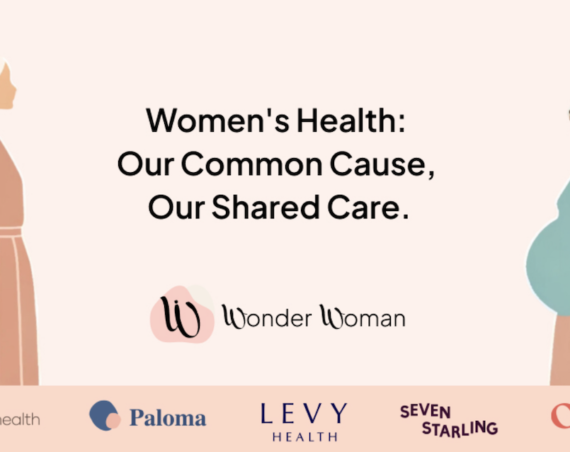
Today I thought I’d write about something I’ve been thinking about a lot lately. Hair loss. And specifically female hair loss.
As someone living with PCOS, I sometimes find myself in the shower with a handful of hair. Yes. PCOS-induces hair loss is indeed a thing.
And while hair loss is one of the “less critical” symptoms of the chronic hormonal imbalance that impacts around 1 in 10 women, it sometimes surprises me that something that affects so many women (with or without PCOS) is not discussed more. But beyond the personal, there’s a fascinating market story unfolding here that I believe deserves our attention.
Let’s start with some numbers that caught my eye.
When Hims & Hers launched their female hair loss program in early 2022, they shared this eye-opening statistic:
“Hair loss affects around 1 in 3 women, so roughly 30 million in the U.S. alone, at some point in their lives.”
That’s a staggering figure, and it hints at an underserved market ripe for disruption. But what’s really intriguing is the shift in consumer behavior. Hims noted that “Internet searches alone for hair loss have increased by 8 percent in the 12 months since February 2021.” This surge in online searches signals a growing awareness and willingness to seek solutions, creating a perfect storm for direct-to-consumer models and digital health platforms.
Now, you might wonder why this market hasn’t seen more innovation earlier. I think the answer lies partly in the complexity of the problem. Hair loss isn’t a one-size-fits-all issue, especially for women. It’s a intricate dance of biology, hormones, and external factors.
The hair growth cycle consists of three main phases: anagen (growth), catagen (transition), and telogen (resting). Hair loss occurs when this cycle is disrupted, which can happen due to hormonal changes, nutritional deficiencies, stress, medications, or underlying health conditions. For women, triggers range from pregnancy and menopause to thyroid disorders and cancer treatments.
This complexity presents both a challenge and an opportunity. It’s a challenge because developing effective solutions requires a nuanced understanding of these various factors. But it’s an opportunity because it opens up multiple points for intervention and product development. Companies that can successfully navigate this complexity stand to capture significant market share.
Take Hims & Hers, for example. They’ve adopted a platform approach, offering a range of products from topical treatments to oral medications, along with a personalized hair care assessment tool. This strategy acknowledges the multi-factorial nature of hair loss and positions them to capture a broad segment of the market.
But the real innovation is happening in niche markets. Nutrafol, for example, has developed a postpartum-specific supplement. This targeted approach not only addresses a specific biological need but also taps into the emotional aspects of postpartum hair loss. It’s a smart play that could serve as a model for addressing other niche segments within the broader market.
Then there’s Great Many, which recently raised a $3.8M pre-seed round. They’re taking the platform concept a step further by integrating in-studio treatments with at-home care and telehealth services. This hybrid model could be key by offering a more comprehensive and personalized approach that could yield better outcomes and thus higher customer retention.
What’s really exciting, though, is how technology is revolutionizing this space. Advancements in diagnostics are reshaping the market landscape. Techniques like trichoscopy and AI-powered image analysis are improving early detection and treatment personalization. An example here would be Scandinavian Labs’ TrichoAI, an app-based tool with the goal to make understanding hair loss simple and accessible.
But perhaps the most intriguing segment of this market is in cancer-related hair loss. Companies like Luminate, Paxman or CoolerHeads are developing technologies to prevent chemotherapy-induced alopecia.
From an investor’s perspective, what makes this market particularly attractive is its intersection with several key trends in both healthcare and consumer behavior:
- The shift towards personalized medicine
- The growing integration of tech in healthcare
- The increasing focus on wellness
- The destigmatization of health issues, particularly in women’s health
Moreover, there are still significant gaps in the market. Nutrition-focused solutions, products catering to diverse hair types, and treatments addressing root causes rather than symptoms are all areas ripe for innovation.
And let’s not forget about the cutting-edge research happening in labs around the world. Ongoing clinical trials exploring stem cell therapies and novel drug compounds offer a fascinating glimpse into future treatment directions. As in so many other spaces for companies that can bridge the gap between this cutting-edge research and practical applications, the potential is enormous.
However, challenges remain. Besides the usual regulatory hurdles, especially for novel treatments, there’s also the challenge of changing deeply ingrained consumer behaviors and overcoming the stigma that still surrounds hair loss, particularly for women.
One significant hurdle – which is also a massive opportunity – lies in integrating new solutions into traditional healthcare settings. There’s huge potential for companies that can effectively partner with healthcare providers to bring new treatments to patients.
Despite these challenges, I think that the female hair loss market represents a compelling opportunity. It’s a large, growing, and underserved market at the intersection of several key trends in healthcare and consumer behavior. For investors and entrepreneurs willing to navigate its complexities, the potential rewards could potentially be substantial.
As the women’s health industry continues to evolve, female hair loss stands out to me as a segment worthy of increased attention and potentially also investment.
It’s not just about hair – it’s about confidence, health, and quality of life. And unsurprisingly that’s an investment thesis I can get behind.



